A web design questionnaire is an essential tool for gathering information from clients and aligning their expectations with the project. At our company, we understand the importance of this questionnaire in creating successful websites. Our web design questionnaire allows us to tailor our services to meet the specific needs of our clients and optimize their web design projects.
With our client-focused approach, we aim to gather comprehensive information about your business, target audience, goals, design preferences, and other essential factors. By utilizing our web design questionnaire, we ensure that every aspect of your project is carefully considered and executed with precision.
The information gathered through our web design questionnaire helps us create a website that accurately represents your brand, appeals to your target audience, and achieves your desired outcomes. By understanding your unique needs and objectives, we can provide customized web design solutions that drive results.
Don’t leave your web design project to chance. Optimize your project’s success with our comprehensive web design questionnaire.
Key Takeaways:
- A web design questionnaire is crucial for gathering information and aligning expectations with the project.
- Our web design questionnaire allows us to tailor our services to meet your specific needs.
- By understanding your business, target audience, goals, and design preferences, we can create a customized web design solution.
- Our web design questionnaire ensures that your website accurately represents your brand and achieves your desired outcomes.
- Don’t leave your web design project to chance – optimize its success with our comprehensive web design questionnaire.
The Importance of a Web Design Questionnaire
A web design questionnaire is an essential tool for ensuring the success of your web design project. It plays a vital role in clarifying important details, such as the project scope, timeline, budget, and desired look and feel of your website.
By asking specific questions related to your business, target audience, goals, and design preferences, a web design questionnaire provides a comprehensive understanding of your project requirements. It facilitates effective communication between you and the web designer, ensuring that your vision and expectations are accurately captured.
“A web design questionnaire helps in gathering essential information, aligning project expectations, and optimizing the web design process.” – Web Design Experts
With a web design questionnaire, you can provide valuable insights that enable the web designer to tailor their approach to meet your specific needs. It ensures that both parties are on the same page, leading to a more efficient and satisfactory web design experience.
The Benefits of Using a Web Design Questionnaire
Using a web design questionnaire offers several benefits:
- Streamlined Project Scope: The questionnaire helps define the scope of the project, ensuring that all parties have a clear understanding of what needs to be accomplished.
- Time and Cost Efficiency: By gathering all the necessary information upfront, the web designer can accurately estimate the project timeline and budget, saving you time and money.
- Alignment of Design Preferences: The questionnaire allows you to express your design preferences, ensuring that the final website reflects your brand identity and resonates with your target audience.
- Effective Communication: By providing specific details about your business, target audience, and goals, you enable the web designer to effectively communicate your message through the design and functionality of the website.
The Web Design Questionnaire Template
Our web design questionnaire template is designed to help you provide the necessary information for a successful web design project. It covers key areas such as:
- Your company description
- Your target audience
- Your goals and objectives for the website
- Your design preferences and branding guidelines
- The desired features and functionalities of the website
- Evaluation of any existing website
- The project timeline and budget
- Collaboration and communication preferences
By completing our web design questionnaire, you can provide the necessary information to kickstart your web design project and ensure that your vision is accurately translated into a stunning and impactful website.
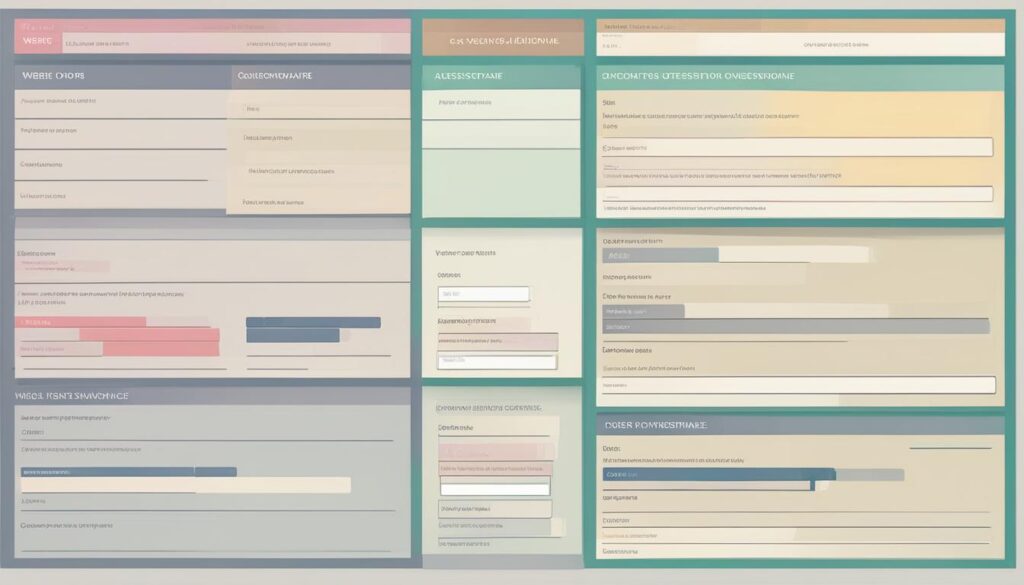
Next, we will dive deeper into the key questions you should include in your web design questionnaire, enabling you to gather the most relevant and valuable information for your project’s success. Stay tuned!
Key Questions to Include in a Web Design Questionnaire
When it comes to creating a comprehensive web design questionnaire, there are several key areas that should be covered. By asking the right questions, we can gather essential information from our clients and ensure that their vision is accurately captured throughout the web design process. Here are some important questions to include in a web design questionnaire:
- Company Information: Obtain a thorough understanding of the client’s company, including its history, mission, values, and products or services offered.
- Target Audience: Identify the client’s target audience demographics, behaviors, and preferences to design a website that appeals to their needs and desires.
- Unique Selling Proposition: Determine the client’s unique selling proposition (USP) or competitive advantage to highlight it effectively on the website.
- Existing Website: If the client has an existing website, evaluate its strengths, weaknesses, and areas for improvement to inform the redesign process.
- Desired Features and Functionalities: Learn about the specific features, functionalities, and interactive elements that the client wants to incorporate into their new website.
- Goals and Objectives: Discuss the client’s goals and objectives for the website, whether it’s generating leads, increasing online sales, or enhancing brand awareness.
- Content Readiness: Determine the client’s readiness to provide the necessary content for the website, such as text, images, videos, and testimonials.
- Branding Guidelines: Gather information about the client’s branding guidelines, including logo, color scheme, typography, and visual style preferences.
- Launch Timeline: Establish the client’s desired launch date for the website, considering any specific events or promotions that align with the launch.
- Budget: Discuss the client’s budget for the web design project to ensure that the proposed solutions align with their financial resources.
By addressing these key areas in our web design questionnaire, we can gather comprehensive information that guides the web design process and ensures that we capture the client’s vision accurately. This information serves as the foundation for creating customized and impactful website designs that exceed our clients’ expectations.
Understanding the Client’s Business and Target Audience
In order to create a successful website, we recognize the importance of gaining a thorough understanding of our client’s business and target audience. By asking specific questions related to their company, products or services, unique selling proposition, and target audience demographics, we are able to design a website that effectively represents their brand and resonates with their target market.
Our web design questionnaire includes carefully crafted questions to ensure we capture the necessary information that guides the design elements, content, and overall structure of the website. By understanding our client’s business and target audience, we can deliver a website that not only meets their expectations but also drives results.
Questions to Understand the Client’s Business:
- What does your company do and what are your main products or services?
- What sets your company apart from competitors? What is your unique selling proposition?
Questions to Identify the Target Audience:
- Who is your target audience? Please provide demographic information such as age, gender, location, and interests.
- What are the motivations and pain points of your target audience? What are they looking for when visiting your website?
By gathering this information, we can create a website that speaks directly to our client’s target audience, effectively communicates their brand’s value proposition, and engages potential customers. Understanding the client’s business and target audience is the foundation of a successful web design project.

Defining Goals and Objectives
When it comes to web design projects, clarifying goals and objectives is paramount in creating a website that surpasses client expectations. Our web design questionnaire includes targeted questions that help us align the project’s focus with the desired outcomes.
- What are your primary goals for the website?
- Are you looking to generate leads or sales?
- Are you aiming to increase brand visibility?
- Do you want to improve the user experience?
By understanding your specific goals and objectives, we ensure that your website is tailored to deliver the intended results, whether it’s attracting more customers, driving conversions, or enhancing brand engagement.

Client Testimonial:
“Working with [our company name] was a game-changer for our business. They took the time to understand our goals and objectives, and as a result, we saw a significant increase in website traffic and conversions. Their web design questionnaire helped us define our vision and create a website that truly represented our brand.” – John Smith, CEO of XYZ Company
Design Preferences and Branding Guidelines
When it comes to web design, we understand that capturing the client’s vision is essential. That’s why we prioritize understanding the client’s design preferences and branding guidelines. By asking the right questions about color schemes, typography, visual elements, and desired website aesthetics, we ensure that the website reflects the client’s unique brand identity.
Color plays a crucial role in creating a visually appealing design. Our web design questionnaire covers questions about the client’s preferred color palette, including primary and secondary colors, and their significance to their brand. This information helps us choose colors that resonate with their target audience and effectively communicate the brand’s message.
Typography also plays a significant role in web design. Our questionnaire dives deeper into the client’s font preferences, including font styles and sizes. By understanding their typography preferences, we can create a website that aligns with their brand image and enhances the overall user experience.
Visual elements such as images, illustrations, and icons contribute to the overall aesthetics of a website. We ask our clients about their preferred visual style and the types of imagery they want to incorporate into their website. Whether they prefer a minimalist approach or vibrant visuals, we tailor the design to meet their preferences and create a visually stunning website.
“Design is the silent ambassador of your brand.”
Not only do we consider design preferences, but we also pay close attention to the client’s branding guidelines. Incorporating their existing brand elements and guidelines ensures consistency across all touchpoints and helps strengthen brand recognition. We ask questions about their logo, tagline, and any specific guidelines they have regarding the use of their brand identity elements.
By understanding the client’s design preferences and branding guidelines, we create a unique and visually appealing website that accurately represents their brand identity. Our goal is to provide a seamless web design experience that exceeds client expectations and captures the essence of their brand.
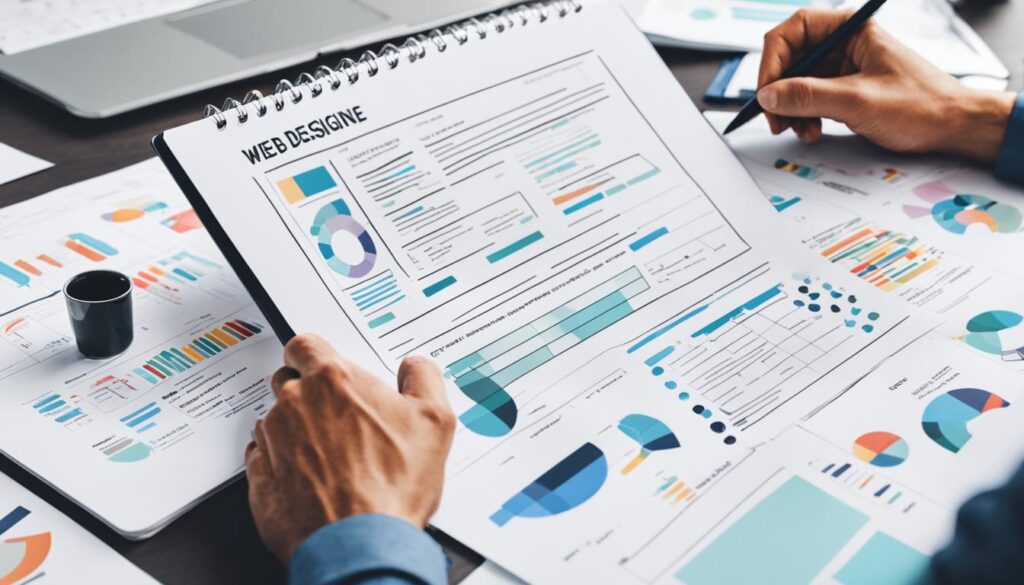
Desired Features and Functionalities
Determining the desired features and functionalities of your website is crucial for planning and executing your web design project. At [Company Name], we understand that every business has unique needs and goals, which is why our web design questionnaire includes specific questions to identify the technical requirements that will help your website fulfill its purpose.
Our comprehensive questionnaire covers a wide range of features and functionalities to ensure that your website meets your expectations and provides a seamless user experience. Here are some of the key areas we focus on:
- Pages: We ask about the number and types of pages you require, such as home, about, services, products, blog, and contact pages. This helps us create a structure that aligns with your content and navigation needs.
- Interactive Elements: We inquire about any specific interactive elements you would like to incorporate, such as sliders, image galleries, accordions, animations, or custom forms. These elements enhance user engagement and make your website more dynamic.
- E-commerce Capabilities: If you plan to sell products or services online, we explore your e-commerce needs, including product catalogs, shopping carts, payment gateways, inventory management, and order tracking. This ensures a seamless and secure online shopping experience for your customers.
- Contact Forms: We discuss your requirements for contact forms, including fields, validation, and autoresponders. This allows visitors to easily reach out to you and ensures that you receive their inquiries or feedback.
- Social Media Integration: We explore your preferences for integrating social media platforms into your website, such as sharing buttons, embedded feeds, or social login options. This helps in increasing your online visibility and fostering social engagement.
- Other Specific Functionalities: We address any additional functionalities you may need, such as event calendars, booking systems, user login areas, membership platforms, or language translation. These functionalities are tailored to meet your specific business requirements.
By understanding your desired features and functionalities, we can create a website that not only looks visually appealing but also delivers the functionality and usability necessary to achieve your business goals.
Our Focus: User Experience and Conversion
“The success of a website lies in its ability to provide a seamless user experience and convert visitors into customers.” – [Company Name]
At [Company Name], we prioritize user experience (UX) and conversion optimization in our web design process. We leverage the desired features and functionalities collected from our web design questionnaire to create an intuitive and user-friendly website that maximizes engagement and conversions.
Our team of experienced web designers and UI/UX specialists will use their expertise to craft a website that aligns with your brand identity while prioritizing elements that enhance user experience, such as intuitive navigation, clear calls-to-action, optimized performance, and responsive design.
Additionally, by incorporating the desired functionalities identified in the questionnaire, we ensure that your website provides a seamless user journey, allowing visitors to easily find information, interact with your content, and take desired actions. This ultimately increases the chances of converting website visitors into loyal customers.
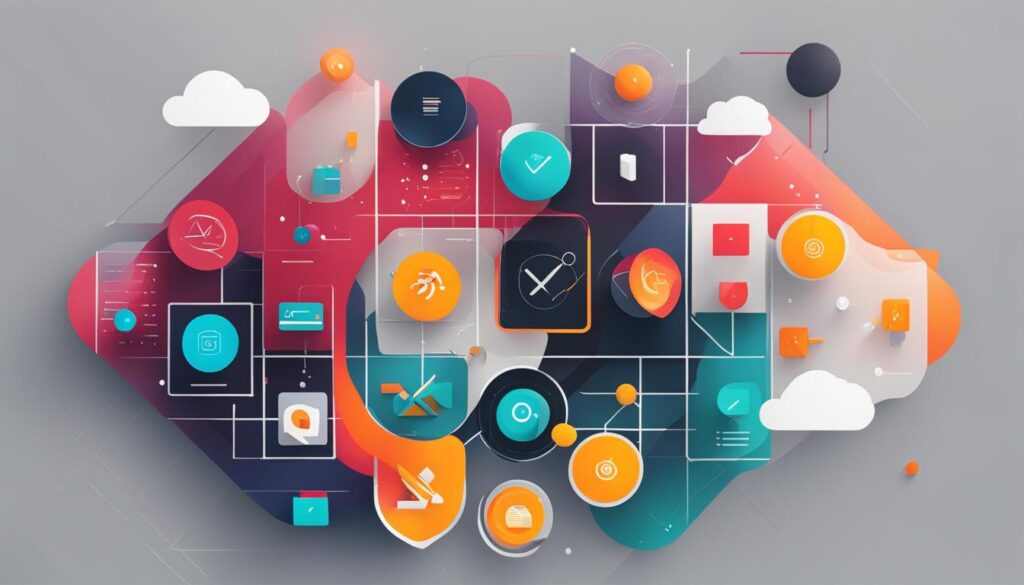
With our expertise and attention to detail, we guarantee a website that not only meets your expectations but goes above and beyond to deliver a stellar user experience that drives results for your business.
Existing Website Evaluation
Assessing the client’s existing website is an essential step in our web design process. By understanding their current online presence, we gain valuable insights into their preferences and areas for improvement. Through a comprehensive evaluation, we can determine what works well and identify the aspects that need enhancement. This assessment allows us to make informed design decisions for the new website, ensuring that it surpasses the client’s expectations and achieves their goals.
During the evaluation, we consider various factors, including the likes and dislikes of the current website. We want to know what elements resonate with the client, as well as those they find ineffective or outdated. By understanding their preferences, we can incorporate the successful elements into the new design and avoid any aspects they wish to change.
In addition to evaluating the client’s existing website, we also request URLs of reference websites. These references serve as inspiration, giving us a clear understanding of the client’s desired aesthetic, functionality, and user experience. By analyzing these reference websites, we can identify trends, explore innovative design approaches, and develop a customized website that stands out within their industry.
By thoroughly evaluating both the current website and reference websites, we can create a design that surpasses expectations and delivers a modern, user-friendly, and visually appealing experience.
Our team places great importance on incorporating the client’s feedback and vision, as it helps us ensure that the new design aligns with their goals and brand identity. This evaluation process enables us to collaborate effectively and deliver a website that not only improves upon the existing one but also positions the client for online success.
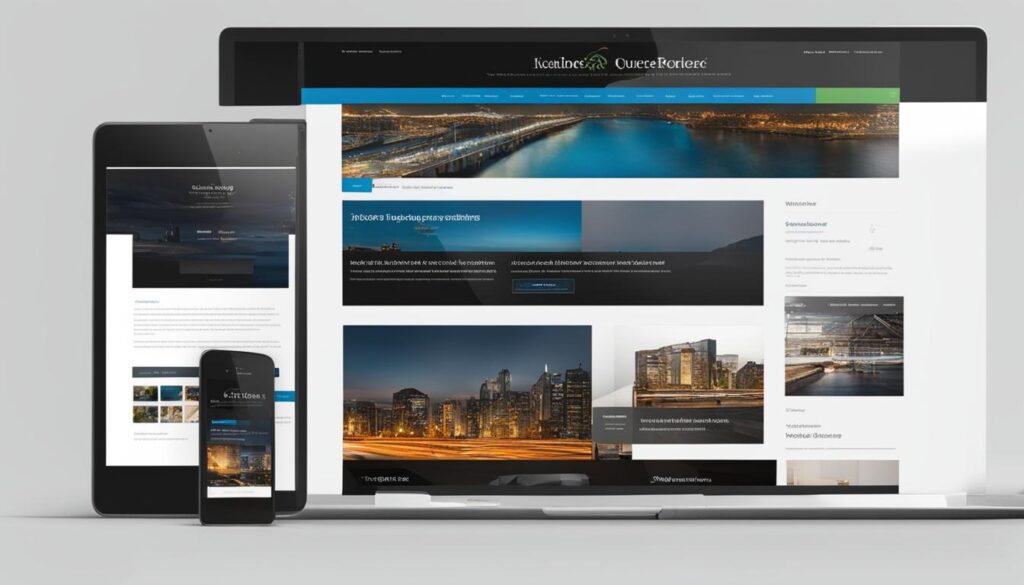
| Aspects for Evaluation | Considerations |
|---|---|
| Website Layout | Determine the effectiveness of the current layout and identify potential improvements to enhance usability and navigation. |
| Visual Design | Evaluate the overall design aesthetics, color schemes, typography, and imagery to ensure consistency and brand alignment. |
| Content Organization | Assess how well the content is structured and presented, making recommendations to improve readability and information hierarchy. |
| Functionality | Identify any technical limitations or missing features that could be addressed to enhance user experience and achieve desired goals. |
| Performance | Review the website’s loading speed, responsiveness, and cross-browser compatibility to optimize its performance. |
| Search Engine Optimization | Analyze the website’s SEO elements, such as meta tags, keywords, and site structure, to identify opportunities for improvement. |
Project Timeline and Budget
Setting clear expectations for the project timeline and budget is crucial for managing the web design process effectively. Proper planning and resource allocation are essential to ensure that the project stays on track, avoids delays, and meets the client’s goals. Our web design questionnaire includes questions specifically designed to gather information about the desired launch date and website development budget.
By understanding the client’s timeline requirements, we can create a realistic project schedule that aligns with their goals. This allows us to allocate the necessary resources and plan each phase of the web design process accordingly. By establishing a clear timeline, we ensure that the project progresses smoothly and meets the client’s expectations.
Similarly, discussing the website development budget is vital for designing a cost-effective solution that fulfills the client’s needs. Our web design questionnaire prompts clients to provide information about their budgetary constraints, enabling us to propose suitable options and make informed decisions regarding the project’s scope and specifications.
Ultimately, by addressing the project timeline and budget during the initial stages of the web design process, we can establish a solid foundation for collaboration and ensure successful project outcomes.
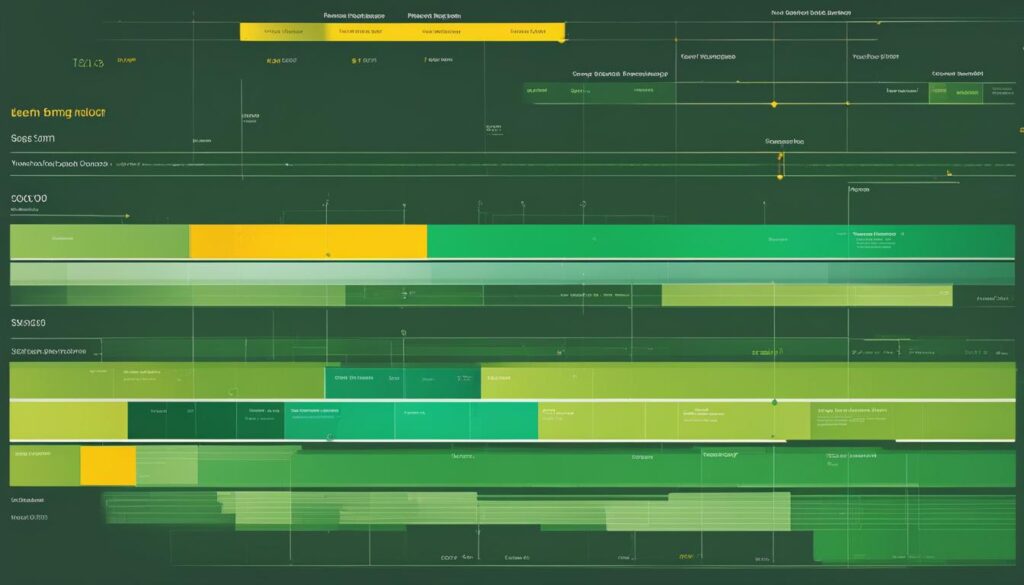
| Project Timeline | Budget Range |
|---|---|
| 1-2 weeks | $1,000 – $3,000 |
| 2-4 weeks | $3,000 – $7,000 |
| 4-6 weeks | $7,000 – $10,000 |
| 6+ weeks | Custom Quote |
Collaboration and Communication
Establishing effective collaboration and communication channels with our clients is crucial for ensuring the success of their web design projects. At OurWebDesignCompany, we prioritize clear and open lines of communication to ensure smooth coordination and minimize any miscommunication or delays.
As part of our web design questionnaire, we ask our clients about their preferred mode of communication. Whether it’s through email, phone calls, or video conferencing, we tailor our communication channels to match their preferences, making it convenient and efficient to exchange ideas, feedback, and project updates.
Furthermore, we understand the importance of having a designated project contact person. This ensures that there is a single point of contact for both parties to streamline communication and avoid any confusion. Having a dedicated contact person allows us to address any questions, concerns, or changes promptly, resulting in a more collaborative and productive working relationship.
We also value our clients’ involvement in the design process. By including questions in our web design questionnaire that gauge their level of involvement, we are able to strike a balance between our expertise and their vision. This collaboration empowers our clients to contribute their insights, ideas, and preferences, resulting in a website design that truly reflects their brand and aligns with their goals.
Effective collaboration and communication are the foundation of a successful web design project. By fostering a transparent and interactive working relationship, we ensure that our clients have a voice in the design process and are actively involved in shaping their website.
With our commitment to collaboration and communication, our clients can trust that their web design projects are in capable hands. We prioritize their input, keep them informed at every stage, and work closely with them to refine and fine-tune the design until it meets their expectations.

Collaborate with us today and experience the power of effective communication in creating exceptional web design solutions.
Conclusion
In conclusion, our well-crafted web design questionnaire is an invaluable tool for gathering essential information from our clients and optimizing the web design process. By addressing key areas such as their business, target audience, goals, design preferences, and project timeline, our web design questionnaire ensures that their website meets their expectations and delivers the desired outcomes.
With our tailored web design questionnaire, we are able to create customized web design solutions that perfectly align with our clients’ unique needs and objectives. By understanding their specific requirements and preferences, we can design and develop websites that truly reflect their brand identity and resonate with their target market.
Unlock the full potential of your project by ordering our web design plan on our website today. Let us transform your vision into a captivating and impactful website that drives results. Contact us now to start the journey towards a successful web presence.
FAQ
Why is a web design questionnaire important?
A web design questionnaire is important because it helps gather information from clients and ensures their expectations and preferences align with the project. It allows us to tailor our services to meet the specific needs of our clients and optimize their web design projects.
What information does a web design questionnaire clarify?
A web design questionnaire clarifies important details such as the project scope, timeline, budget, and desired look and feel of the website. It also asks specific questions regarding the client’s business, target audience, goals, and design preferences to provide a comprehensive understanding of project requirements and facilitate effective communication between the client and designer.
What should be included in a web design questionnaire?
A web design questionnaire should include questions about the client’s company, target audience, unique selling proposition, existing website (if any), desired features and functionalities, goals, content readiness, branding guidelines, launch timeline, and budget. Addressing these areas provides comprehensive information that guides the web design process and ensures the client’s vision is captured accurately.
How does a web design questionnaire help understand the client’s business and target audience?
By asking questions about the company’s products or services, unique selling proposition, target audience demographics, and buyer motivations, a web design questionnaire helps in designing a website that effectively represents the client’s brand and appeals to their target market. This information guides the design elements, content, and overall structure of the website.
Why is it important to clarify goals and objectives in a web design questionnaire?
Clarifying goals and objectives helps in creating a website that meets the client’s expectations. Questions related to the desired outcomes of the website, such as lead generation, brand visibility, or improved user experience, help in aligning the project’s focus and ensuring that the website delivers the intended results.
How does a web design questionnaire capture design preferences and branding guidelines?
Questions regarding color schemes, typography, visual elements, and desired website aesthetics help in capturing the client’s vision and creating a visually appealing design. By incorporating the client’s branding guidelines, the website maintains consistency with their overall brand image.
What information does a web design questionnaire gather about desired features and functionalities?
Questions regarding required pages, interactive elements, e-commerce capabilities, contact forms, social media integration, and other specific functionalities help in identifying the technical requirements of the website and ensuring that it fulfills the client’s needs.
How does a web design questionnaire evaluate an existing website?
Questions about the likes and dislikes of the current website, URLs of reference websites, and specific elements desired or to be avoided help in understanding the client’s expectations and making informed design decisions for the new website.
Why is it important to discuss project timeline and budget in a web design questionnaire?
Setting clear expectations for the project timeline and budget is crucial for managing the web design process effectively. Questions about the desired launch date and the client’s budget for the website help in planning the project timeline and allocating resources accordingly, avoiding any delays or budget constraints.
How does a web design questionnaire facilitate collaboration and communication?
Questions about the client’s preferred mode of communication, designated project contact person, and involvement in the design process help in ensuring smooth coordination and minimizing miscommunication or delays.
What is the purpose of a web design questionnaire?
A web design questionnaire is a tool for gathering essential information from clients and optimizing the web design process. By addressing key areas such as the client’s business, target audience, goals, design preferences, project timeline, and budget, a web design questionnaire ensures that the website meets the client’s expectations and delivers the desired outcomes.
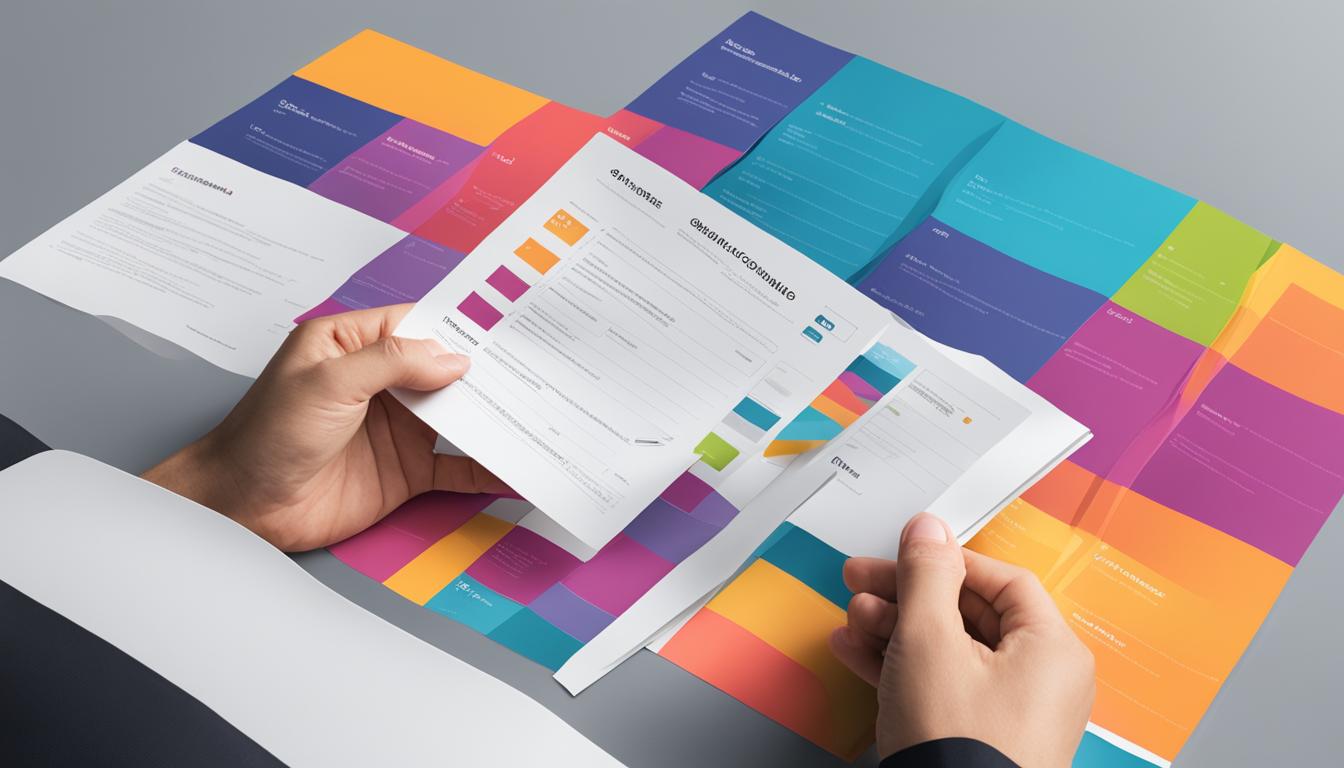
Leave a Reply